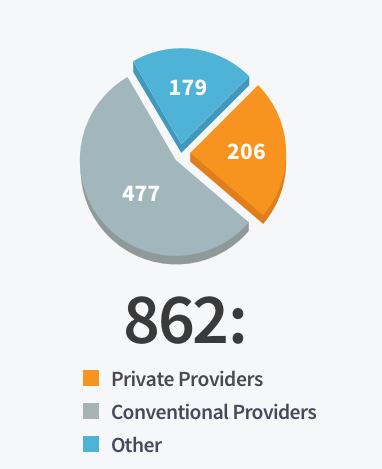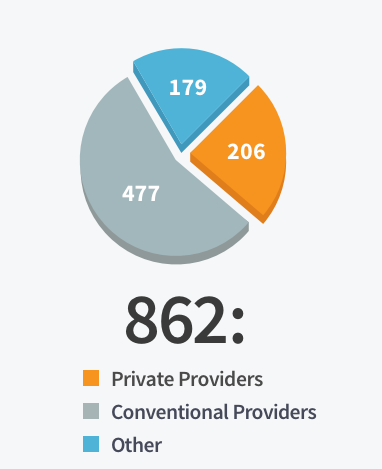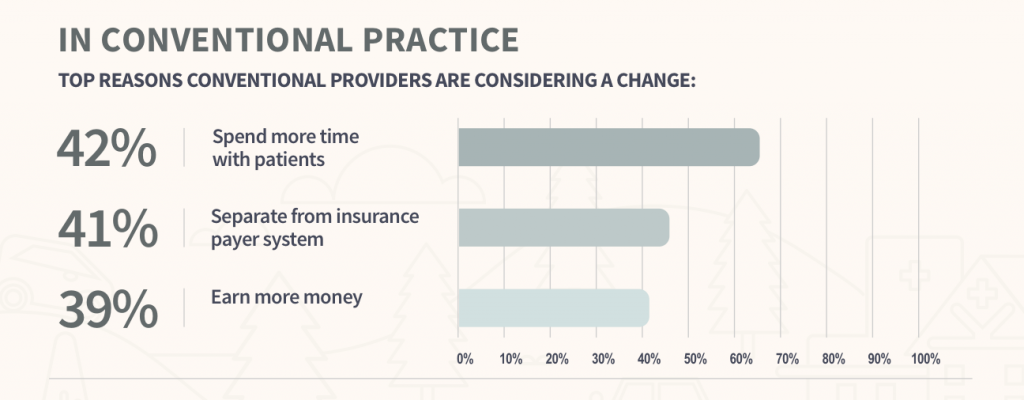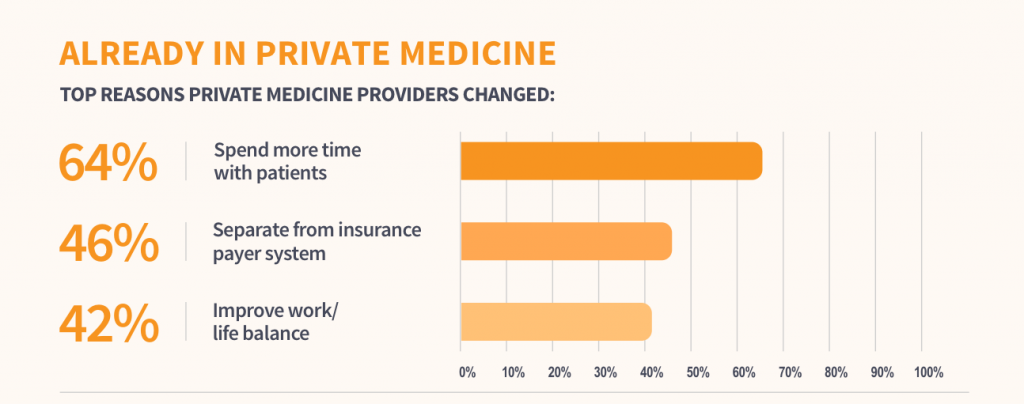There's been a lot of buzz lately about concierge medicine models and more provider switching to a private, direct-pay model. The shift to private medicine comes as no surprise considering the rising administrative burden, operating costs, and many other pressures on today's physicians.
So how many physicians are actually making the jump to private medicine? And, what differences are private physicians seeing in the way they practice medicine?
EHR company Kareo set out to answer just these questions with their recent provider survey and summarized the results in this infographic. 862 providers told all on what payment models they use, why they are considering transitioning to private medicine, and whether the change in models is worth it.
Here are the standout statistics from Kareo's report.
Who responded to the survey?
The respondents who participated in Kareo's survey know their way around a medical practice. Participants had an average of 19.75 years' experience in medicine. Out of the respondents, 55% were conventional providers, and 23% reported working in a private medical practice.
24% of respondents had already transitioned into an alternative means of practicing medicine, such as concierge medicine, direct pay or membership programs. 46% were considering making a similar change within 3 years.

Why are physicians changing to private medicine?
Those considering shifting to private medicine listed similar reasons for making the change as physicians who have already done so. 64% of those already in private medicine gave spending more time with patients as a reason for making the change, along with 42% of practitioners considering a change. 46% of private physicians and 41% of those thinking about a shift listed separating from the insurance failure system as a reason. The only major discrepancy: 42% of private physicians reported improving work-life balance as a reason for making the switch. The third most popular response for physicians considering a transition into private medicine, on the other hand, was earning more money (39%).
How does changing to private medicine impact physicians?
There are significant workflow changes when physicians switch to private medicine. For example, private physicians spend nearly 5 fewer hours on administrative tasks than physicians in traditional medical practices. 63% of physicians in a traditional practice setting have over 1000 patients in their base; 71% of private physicians treat fewer than 500 patients. In turn, private physicians' visits with patients are twice as long as the traditional office visit.
Private and conventional practices face distinctly different challenges. Conventional medical practices have more difficulty staying financially viable, whereas private physicians reported finding new patients as their biggest challenge. Private physicians are at an mHealth advantage: they reported being more likely to use telemedicine as well online marketing platforms, and showed more interest in online scheduling, online payments, and patient portals. Conventional physicians were more likely to want improved claims management, financial reporting services, and specialty EHR features.
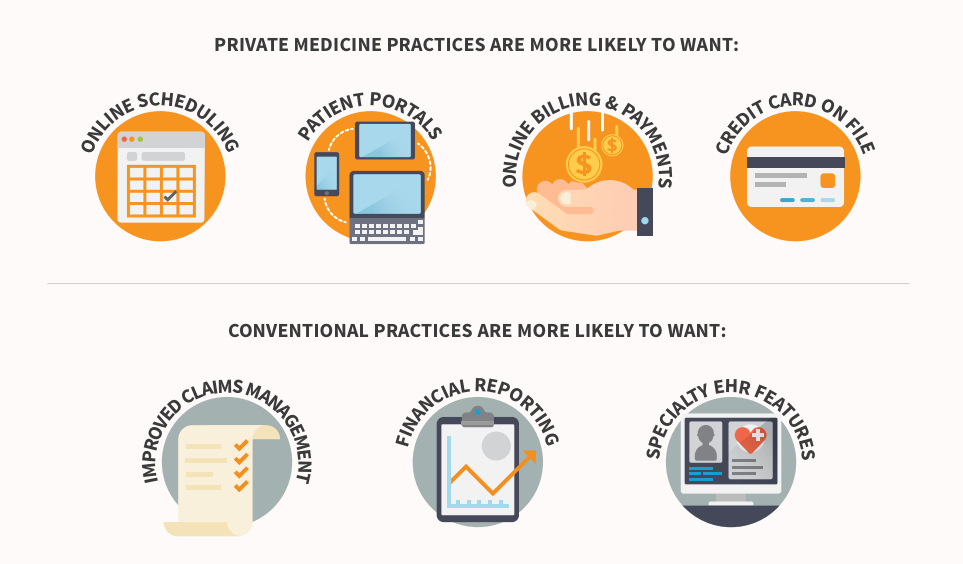
Check out the complete infographic at Kareo.com.
Have you made the switch to private medicine? How has your experience stacked up?


